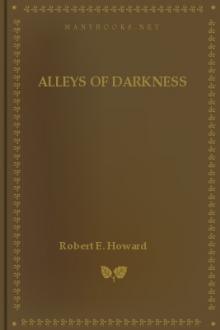A Reasonable Doubt Susan Sloan (chrysanthemum read aloud TXT) 📖

- Author: Susan Sloan
Book online «A Reasonable Doubt Susan Sloan (chrysanthemum read aloud TXT) 📖». Author Susan Sloan
“What did I say that was so wrong?” he exclaimed, almost stomping his foot.
“Who said you said anything wrong?” Arnie Stiversen asked.
“You weren’t there,” Cady replied. “You didn’t see. She smiled when she was done with me. She smiled! Something I said made her happy. It was like I had made her whole case for her or something.”
“Maybe it was a lawyer’s trick -- you know, like she was just trying to rattle your cage, and then see what you would do about it,” his partner suggested.
“Why would she want to do that?” he snapped. “My testimony was over. She was done with me.”
“Well, don’t make any more out of it than you should,” Stiversen advised. “I’m sure she didn’t do it on purpose.”
Cady punched one fist into the other. I screwed up,” he said. “I must have said something I shouldn’t have -- something that helped her damn client.”
. . .
“It was around six-thirty in the morning, and let’s just say that Jason was sober by the time Cady and Stiversen got to him.”
Lily was back at the office for the lunch break, discussing the morning’s events with Joe. In the background, Dancer, her shadow, watched and waited.
“So?” Joe wondered.
“So, he still didn’t fight back.”
“Maybe because he knew Cady was a cop.”
“Exactly,” Lily declared. “In his whole history, he never fought back, drunk or sober. And this time, he didn’t fight back, either. Why not?”
“It’s not in his nature,” Dancer put in.
“What do you mean?” Lily asked.
“His nature,” the man from Spokane explained -- it’s not assertive, it’s subservient. It’s pretty obvious -- he was raised to respect authority, not to defy it.”
“Well, if that’s so,” Lily reasoned, “and Jason recognized Dale in the alley, as the prosecution contends, why would that night have been any different than every other time?”
“It’s hard to say,” Dancer responded.
“I suppose enough alcohol could make an otherwise rational person do stupid things under certain circumstances,” Joe offered.
“But why this time?” Lily persisted. “What was different? Jason didn’t just know Dale was a cop -- he knew Dale. How many times had they been to the dance together? And each time, Jason got knocked around some, but never fought back. So what made this time different?”
“Okay, I don’t know,” Joe conceded. “But I can see you’re dying to tell us -- so have at it.”
“I think Old Eddie may have been onto something,” she said. “I think there really is no other plausible explanation.”
“For what?” Dancer inquired.
“Well, if all Dale was doing was trying to arrest Jason yet again, there wouldn’t have been any argument,” she told him. “Just as there had never been any argument all those times before.”
“So?” Joe pressed.
“So, I’m starting to believe that Dale really was there to meet his supplier, and he wasn’t about to leave any witnesses -- at least not any live ones. I don’t know what the injuries all over him were about, and there’s no telling which injuries that Jason had could have come from a fight with Dale before Cady took after him, but I think I’m now willing to bet even money that it really was self-defense.”
“It’s a pretty good theory,” Joe conceded.
“And it would go a long way toward explaining things,” Dancer said.
She sighed. “Yes,” she said. “Now all we have to do is prove it.”
. . .
A ballistics expert from the State Patrol Crime Lab took the stand after lunch, to confirm, in somewhat laborious detail, but with compelling photographs to illustrate what he was talking about, that the bullet that had killed Dale Scott had in fact been fired from the detective’s own police issue Sig Sauer P250.
“No two guns fire exactly alike,” Edward Padilla explained to the jury. The dark-haired, heavy-set man with thick glasses knew his job thoroughly. He had been doing it for more than twenty years. “Based on manufacturing and usage, the barrel of a gun gets what we call a rifling impression pattern, which is a pattern of striations and scratches that transfers from the barrel to the bullet and can be identified as unique to that gun.”
“And the bullet in question here?” John Henry asked.
“The bullet that killed Dale Scott was a forty caliber Smith and Wesson, which matched the rest of the bullets that were found in the detective’s gun at the time,” the expert explained. “When I test-fired the weapon, the striations on the bullets matched exactly the ones on the bullet recovered by the crime scene investigator at the scene of the shooting.”
“So your testimony here today is that the bullet that killed Dale Scott was fired from his own gun?” John Henry concluded.
“Yes,” the expert said.
There was nothing to cross-examine the analyst on. The bullet was the bullet. And Lily couldn’t do very much about the gun, either. She knew she couldn’t dispute the fact that a bullet, fired from his own gun, had killed Dale, or that Jason had fired it. All she would be able to argue to the jury was why, and a scenario was already beginning to take shape in her mind.
. . .
The last witness of the day was the lab technician who had tested Jason’s blood alcohol level.
“It was at zero,” the technician confirmed.
“And what does that mean?” the prosecutor asked.
“Zero means that, when I performed the test, there was no detectable alcohol in his system.”
“So he wasn’t drunk?” John Henry pressed.
“No, at least not at the time of the test,” the technician replied.
. . .
“And when exactly did you perform this test?” Lily inquired on cross-examination.
The technician checked his notes. “I performed the test at twelve-thirty-five in the afternoon on February 10th,” he replied.
“And that was what -- at least twelve hours after the estimated time of death?”
“Well, I didn’t know that at the time,” the witness confirmed. “But, apparently, yes, it was.”
“Let’s assume





Comments (0)